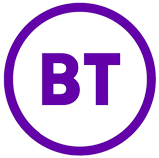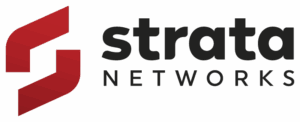How to Use Chat-Based AI Assistants to Query Network Inventory in Plain Language
Trusted by:

















Telecom networks are built on staggering complexity: fiber cables crisscrossing cities, ducts and ODFs filled with connections, routers and switches serving countless logical overlays. For decades, getting insights out of this infrastructure has meant navigating rigid OSS portals, specialized query languages, or spreadsheets that quickly go out of date.
But what if you could simply ask a question like:
“Show me all fiber cables within 100m of Site X installed before 2022.”
And get an answer in seconds? With VC4’s Service2Create (S2C) AI module, that’s exactly what’s possible.
Querying In A Natural Conversational Way Is Key
Traditional OSS and inventory systems are powerful, but can make assumptions. They assume users:
- Know where to click, which filters to apply, and which dataset is accurate.
- Understand the data model well enough to build structured queries.
- Are trained engineers, not managers, planners, or auditors who just need quick answers.
Assumptions… well they’re normally not good right?!
The result? Valuable insights remain locked away from teams that could use them. Conversational querying changes this dynamic by putting network intelligence into plain language. With chat-based AI, asking the inventory a question becomes as natural as talking to a colleague.
The S2C AI Module: Conversational Access to Operational Intelligence
S2C already provides unified, reconciled inventory across:
- Physical assets (fiber, ducts, ODFs, cabinets)
- Logical services (VLANs, GPON splits, MPLS tunnels)
- Commercial overlays (SLAs, customer contracts, service tiers)
The AI assistant layer builds on this by interpreting natural language queries and returning precise results. Think of it as a translator between human questions and technical datasets.
Practical Use Cases for Conversational Queries
Here are a few examples of how different roles inside an operator can use AI-driven chat queries with S2C:
1. Field Planning
Query: “Which fiber segments around Site X are older than 15 years?”
- Result: GIS overlay highlighting cables nearing end-of-life, tied to asset age records.
- Benefit: Proactive planning for refresh cycles before failures occur.
2. Risk & Compliance
Query: “List all leased lines from Vendor Y that expire in the next 6 months.”
- Result: Structured report with contract details, renewal dates, and mapped services.
- Benefit: Prevents financial bleed from unnoticed auto-renewals.
3. Service Delivery
Query: “Show me ducts along Route A with no spare capacity.”
- Result: Inventory snapshot of full ducts, with impacted services noted.
- Benefit: Faster provisioning checks, fewer false service promises.
4. Incident Analysis
Query: “Which customers were affected by the fiber cut near Node Z last Tuesday?”
- Result: SLA-linked customer list with outage durations.
- Benefit: Supports rapid compensation claims and customer communication.
5. Finance & Audit
Query: “Which routers in Region B are still being depreciated but are already decommissioned?”
- Result: Financial register cross-checked with live inventory.
- Benefit: Eliminates hidden OPEX costs, ensures audit-ready accuracy.

Why This Is Unique to VC4
Other OSS systems have tried “AI search” functions, but most stop at keyword-based dashboards. What makes VC4 unique is:
- Reconciled Inventory Backbone: The AI assistant isn’t guessing, it’s querying an always-accurate, reconciled dataset.
- Service Awareness: Results aren’t just asset lists; they’re tied to live services, customers, and financial overlays.
- GIS Integration: Queries can be spatial (“within 100 m of Site X”), not just tabular.
- Multi-Role Accessibility: Engineers, planners, managers, and CFOs can all use the same assistant in plain language.
This makes conversational querying not just a convenience, and makes ease of use of S2C for all departments a massive plus,… but also a way of democratizing network intelligence.
The Future of Conversational OSS
The real value of this technology lies in accessibility:
- For engineers, it speeds up root-cause analysis and planning.
- For finance, it brings operational truth into forecasting and depreciation.
- For leadership, it means faster, clearer answers to board-level questions.
And because it works through an integrated, chat-driven assistant in S2C there are no complex filters or query languages required.
Final Thought: From Queries to Conversations
Telecom data doesn’t have to be locked in specialized tools. With VC4’s AI-driven S2C assistant, operators can interact with their inventory as easily as they chat with colleagues. So next time someone asks, “Which cables are at risk near Site X?”, the answer won’t take a week of data pulls and manual GIS checks. It will take a single line in chat.
Because when your network speaks plain language, everyone in the business can finally listen, understand and accelerate forward.






